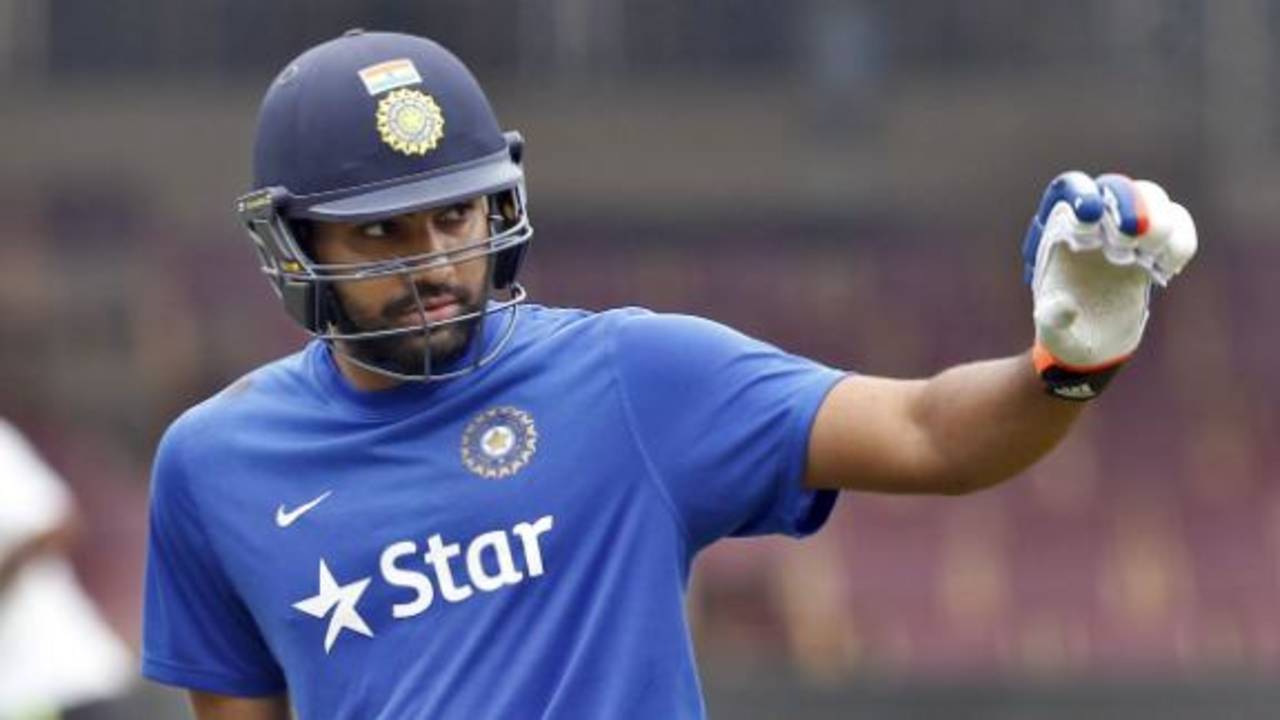Rohit Sharma has now converted four of his nine hundreds into scores of 150 or more. Only Sachin Tendulkar has more 150s in the history of ODI cricket. The god of big innings, though, feels setting oneself up to bat deep into the innings is going to become more and more important with the new changes in the field restrictions. After the World Cup, the batting Powerplay has been done away with, and the fielding team allowed five fielders outside the 30-yard circle for the last 10 overs. It has, according to Rohit, put the onus on the set batsman to bat through because it is not as easy for the incoming batsman to hit at will.
"I think it's very important [to bat long] now that the rules have changed," Rohit said after his 171 not out in Perth went in vain. "There are only four fielders inside the circle in the last 10 overs. So a set batsman is batting in the middle, it is easier for him than the new batsmen to come and play his shots. So it is very important for the batsman who is set and batting well to carry on as long as possible because that is how you can stretch your target and get to a competitive score.
"That's how I have looked at it always and it is a good opportunity to get past 100 and you challenge yourself, what else you can do after that. So for me after getting a hundred I start another innings, which is starting from zero and scoring another hundred and that's how I look at it. As a batting group our aim has always been one batsman batting through as long as possible so being a top-order batsman it is my responsibility to bat as long as possible and get the team to a good score and a competitive score, and that's how I look at it."
That India's lower middle order has not been contributing heftily of late has forced Rohit's hand too, to some extent. In the Perth ODI, for example, there was a case for pushing on harder after he and Virat Kohli had got a big partnership going. The four overs immediately after the 40th brought India only 26 runs although they managed to score 93 off the last 10 as a whole. Rohit said the inexperience in the middle meant the top order had to take extra responsibility. The team instructions, too, have been similar.
"To be honest when you bat first you actually don't know what is a defendable score," Rohit said when asked if his and Kohli's strike rate was good enough. "You get 340, and again it is not a safe score anymore. When we were batting in the middle the idea was to capitalise and bat as long as possible. Because considering we have got a couple of newcomers in the middle order. So the top three batsmen - myself, Virat and Shikhar [Dhawan] - it is a big responsibility on the three of us to bat as long as possible.
"When we bat we know that we are not too worried about the strike rate because we always know that we could cover in the end, and that's exactly what happened. In the last 10 overs we scored about 90-95 runs. So I think 309 was a pretty good score on that track, but the Aussies batted really well to get that score, and if you don't take wickets in the middle it is always going to be difficult especially here in Australia."
Rohit emphasised the ability to take those middle-overs wickets, which India manage to do on slower and turning pitches. After MS Dhoni after the first match, Rohit's words too put the focus back on R Ashwin and Ravindra Jadeja, who looked ineffective and conceded both singles and boundaries regularly in the middle overs.
"Our morale is very good because we played very good cricket, and we know that," Rohit said. "Only thing is we need to learn how to take wickets in the middle. How to build the pressure in the middle overs, that is something we need to be aware of. Whoever is bowling in the middle, spinners or fast bowlers, just need to make it a habit of making breakthrough in the middle because it is very important. If wickets fall in the middle then it affects the momentum of the opposition team. That is what we need to do this game because we batted well, we bowled well with the new ball, but were halted in the middle because we didn't take wickets in the middle. That is what we have to learn."
Looking at such a high chase achieved with ease, former India captain Sunil Gavaskar wrote in a column that the white ball has left bowlers on a hiding to nothing. Gavaskar asked for the use of pink ball in ODIs, but Rohit respectfully disagreed, saying batting against the white ball was not as easy as it seemed.
"I am not too sure because it doesn't really matter what I say here," Rohit said about Gavaskar's comments. "Nothing is going to change, but I don't agree that white ball doesn't do anything. If you play in tough conditions it is a nightmare for the batsmen. When you play with two new balls, when the conditions are against the batsmen, and when it is overcast, the ball tends to swing a lot and there is seam movement as well. So that's how I look at it and that is my personal opinion on that."
Sidharth Monga is an assistant editor at ESPNcricinfo
